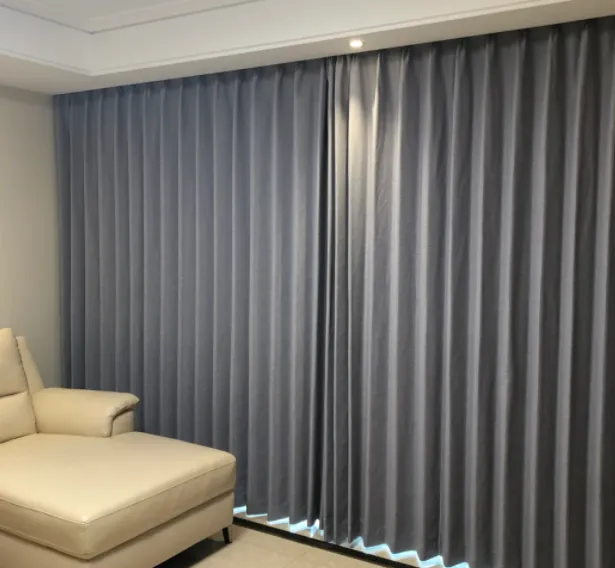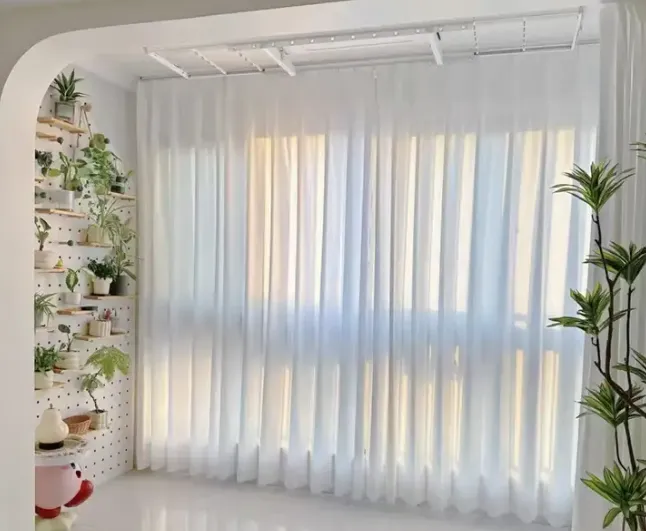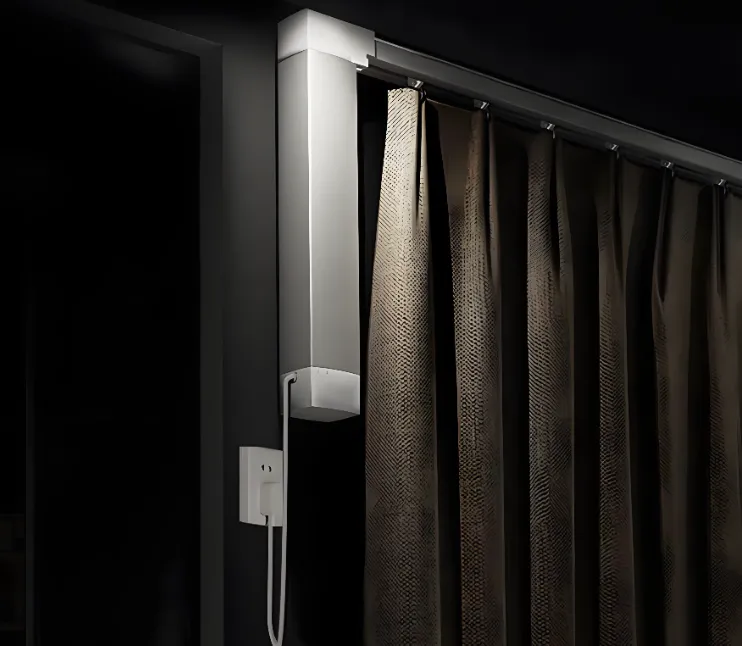A Comprehensive Guide to Buying Living Room Curtains
The living room is the heart of a home—where families gather, guests are entertained, and daily life unfolds. Curtains, as both functional fixtures and decorative elements, play a pivotal role in shaping the living room’s atmosphere, controlling light, ensuring privacy, and even enhancing energy efficiency. However, with a vast array of options in materials, styles, and sizes, selecting the right living room curtains can be overwhelming. This guide breaks down the key factors to consider, helping you make an informed choice that aligns with your needs and aesthetic preferences.
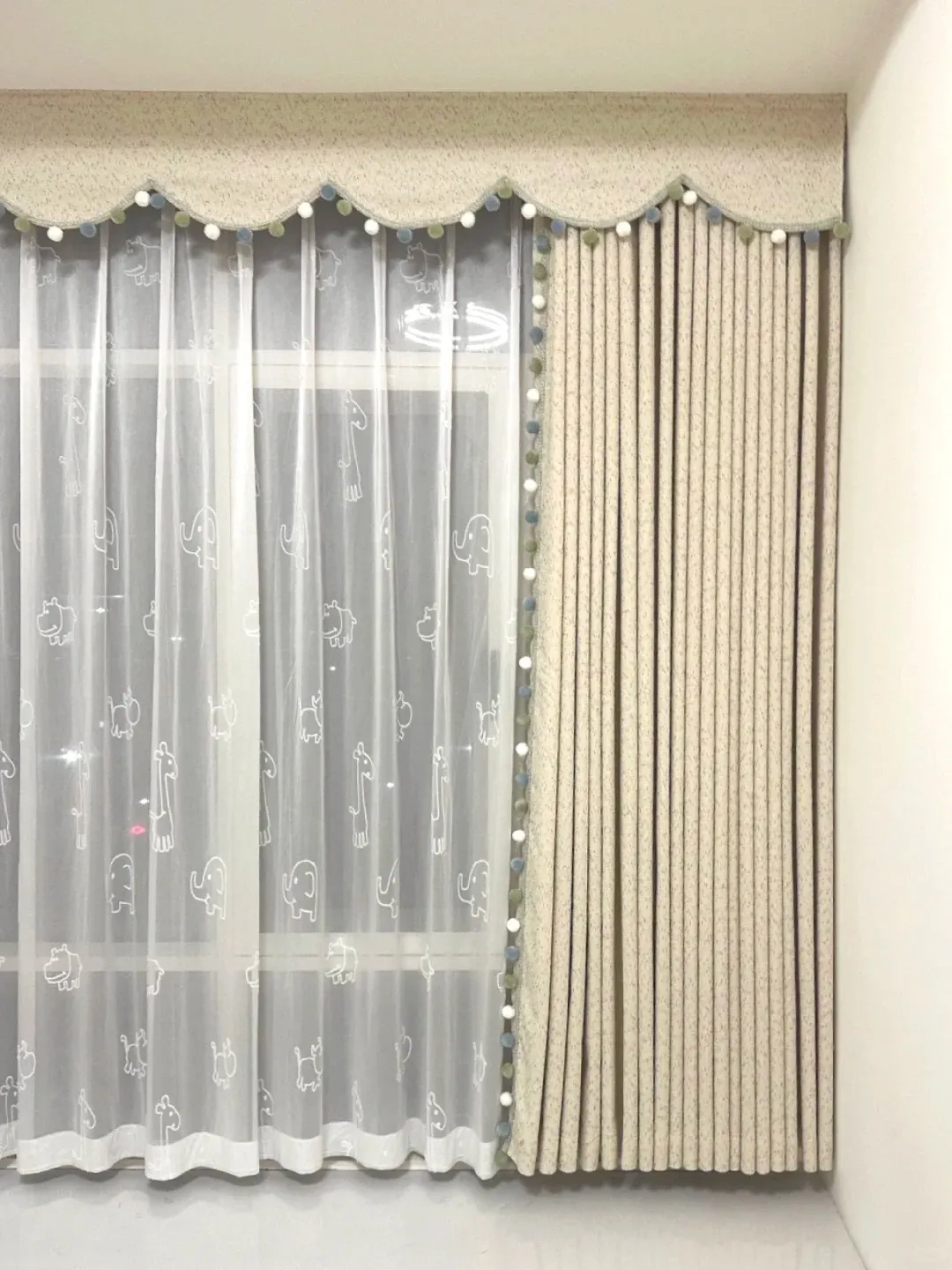
- Sheer/Cafe Curtains: Ideal for spaces where you want to maintain brightness while adding a touch of elegance. Sheer fabrics (like voile or linen blends) diffuse sunlight, creating a warm, airy vibe without compromising visibility. Cafe curtains (covering only the lower half of windows) are great for ground-floor living rooms, letting in light while preserving privacy at eye level.
- Light-Filtering Curtains: Made from medium-weight fabrics (such as cotton or polyester blends), these curtains soften sunlight without fully blocking it. They strike a balance between brightness and privacy, suitable for most living rooms.
- Blackout Curtains: Constructed with thick, layered fabrics (often with a foam backing), blackout curtains block 90-100% of sunlight. They’re perfect for living rooms with home theaters, or for those who prefer darker spaces for napping or reducing glare on TVs.
- For ground-floor or highly visible living rooms: Opt for opaque fabrics (like velvet, heavy cotton, or blackout materials) that prevent outsiders from seeing inside, even when lights are on at night.
- For upper-floor living rooms with less foot traffic: Light-filtering or sheer curtains may suffice, as they obscure direct views while keeping the space bright.
- Insulating Curtains: Thick fabrics (such as velvet, thermal-lined cotton, or wool blends) trap heat in winter and block hot air in summer. Look for curtains labeled “thermal” or “energy-efficient” if you want to improve your home’s insulation.
- Light-Colored Curtains: Reflect sunlight and heat, keeping the living room cool in warm climates.
- Dark-Colored Curtains: Absorb heat, making them a good choice for colder regions (paired with thermal linings for extra insulation).
If your living room is near a noisy street, highway, or busy neighborhood, curtains can help muffle sound. Heavy, dense fabrics (like velvet, suede, or layered linen) are more effective at absorbing noise than lightweight materials. For maximum sound reduction, choose floor-length curtains that cover the entire window, including gaps around the sides.
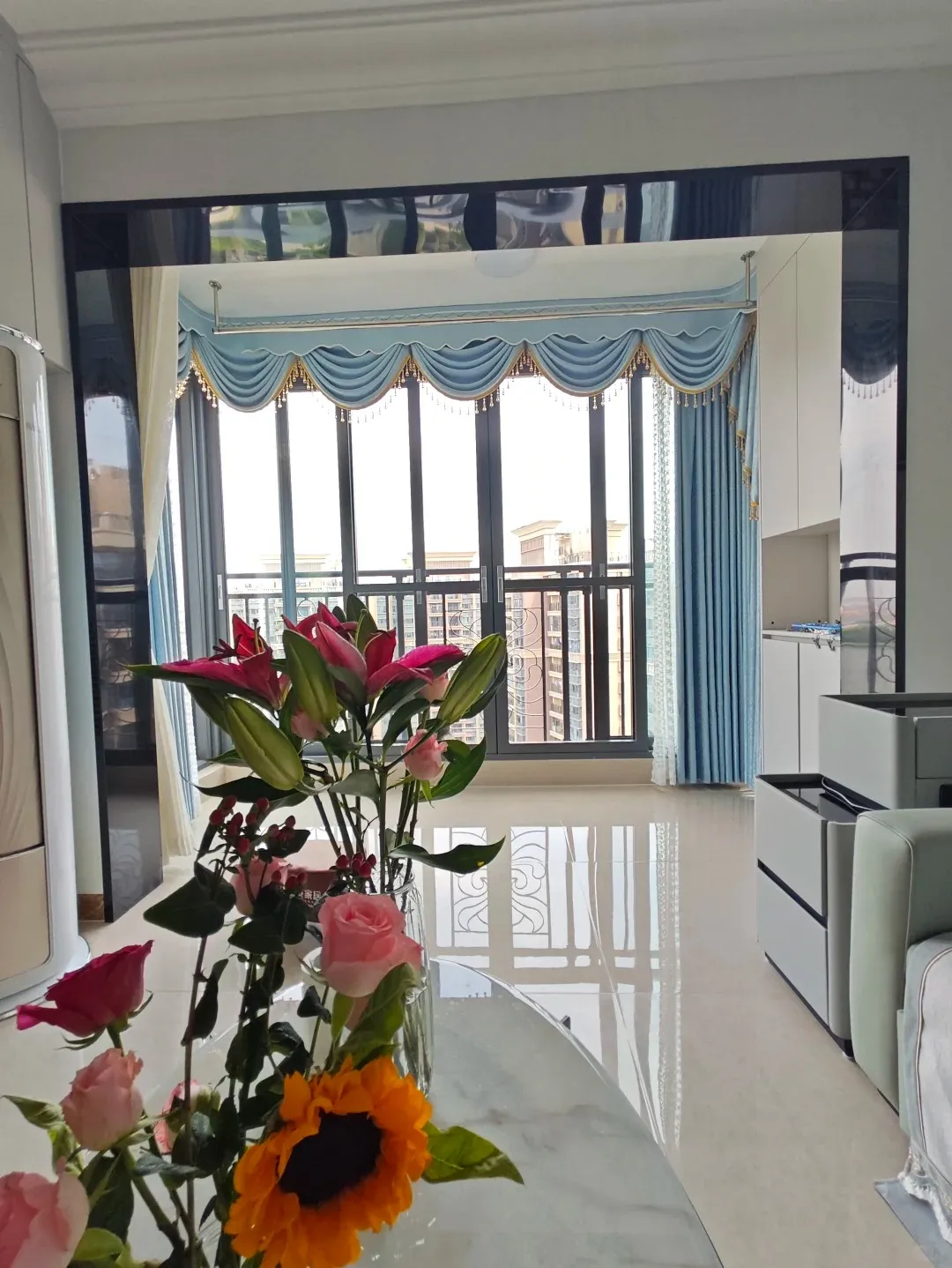
- Cotton: Breathable, lightweight, and easy to clean (most cotton curtains are machine-washable). It drapes well and comes in a range of weights—from lightweight voile to heavy twill. However, pure cotton may wrinkle easily and shrink if not pre-shrunk, so look for cotton blends (e.g., cotton-polyester) for added durability.
- Linen: Offers a relaxed, casual aesthetic with a subtle texture. Linen curtains filter light beautifully and are breathable, making them great for warm climates. They tend to wrinkle (which is part of their charm) and may need ironing to maintain a crisp look. Linen blends (e.g., linen-cotton) are more durable and less prone to wrinkling.
- Velvet: Luxurious and heavy, velvet curtains add elegance and drama to formal living rooms. They insulate well, block light, and reduce noise. However, velvet is high-maintenance—it can attract dust, requires dry cleaning (in most cases), and may crush if folded or rubbed excessively.
- Wool: Thick, insulating, and durable. Wool curtains are excellent for cold climates, as they trap heat effectively. They’re often blended with other fibers (like polyester) to reduce shrinkage and make cleaning easier.
- Polyester: Resistant to wrinkles, fading, and shrinking. It’s often blended with natural fibers (cotton, linen) to improve durability and reduce maintenance. Polyester curtains are machine-washable and hold their shape well, making them a practical choice for high-traffic living rooms.
- Nylon: Lightweight, strong, and quick-drying. Nylon curtains are often used for sheers or lightweight panels, but they can be prone to static and may not drape as well as natural fabrics.
- Polyester-Velvet: A more affordable and low-maintenance alternative to natural velvet. It has a similar luxurious look but is machine-washable and resistant to crushing.
- Cotton-Polyester: Combines cotton’s breathability and texture with polyester’s wrinkle resistance and durability. Ideal for casual living rooms that require easy maintenance.
- Linen-Polyester: Retains linen’s relaxed aesthetic while reducing wrinkling and improving durability.
Wool-Polyester: Offers wool’s insulation and warmth with polyester’s shrinkage resistance and easy cleaning.
- Neutral Colors (White, Beige, Gray, Cream): Versatile and timeless. Neutral curtains blend with any decor, make small living rooms feel larger, and reflect light. They’re perfect for minimalist, Scandinavian, or transitional styles. To add interest, pair neutral curtains with colored throw pillows, rugs, or wall art.
- Bold Colors (Navy, Forest Green, Burgundy, Mustard): Make a statement and add personality to the living room. Use bold curtains as a focal point if your walls, furniture, and rugs are neutral. For example, navy curtains can add depth to a white or beige living room, while mustard curtains bring warmth to a gray-toned space.
- Matching Colors: Curtains that match your wall color create a cohesive, seamless look, making the room feel more spacious. This works well for small living rooms or rooms with bold furniture.
- Contrasting Colors: Curtains that contrast with your walls or furniture add visual interest. For example, white curtains against dark gray walls, or black curtains against white furniture.
- Solid Colors: Clean, simple, and versatile. Solid curtains work well in small living rooms (as they don’t overwhelm the space) or in rooms with patterned furniture, rugs, or wallpaper. They also make the room feel calm and cohesive.
- Subtle Patterns (Stripes, Dots, Small Florals): Add texture without being distracting. Striped curtains can make a ceiling feel higher (vertical stripes) or a window feel wider (horizontal stripes). Small dots or florals are perfect for traditional or cottage-style living rooms.
- Bold Patterns (Large Florals, Geometrics, Abstracts): Serve as a focal point. Use bold-patterned curtains sparingly—pair them with neutral furniture and decor to avoid a cluttered look. They’re ideal for eclectic, bohemian, or maximalist living rooms.
- Floor-Length: The most popular choice for living rooms. Curtains should reach the floor or puddle slightly (1-2 inches) on the ground for a luxurious look. Avoid curtains that end mid-calf or above the floor—they can make the room feel unfinished.
- Puddle-Length: Curtains that puddle 3-6 inches on the floor. This style is dramatic and ideal for formal living rooms with high ceilings or luxurious fabrics (like velvet or silk).
- Sill-Length: Curtains that end at the window sill. This style is casual and practical for small living rooms or windows above radiators, sofas, or coffee tables. However, it may not provide full privacy or insulation.
- Rod Pocket: A simple, casual header where the rod slides through a pocket at the top of the curtain. Ideal for sheers or lightweight curtains in cottage or rustic living rooms. However, rod pocket curtains are hard to adjust and may not hang as neatly as other styles.
- Grommet (Eyelet): Metal or plastic rings at the top of the curtain that slide over the rod. Grommet curtains hang evenly, are easy to open and close, and have a modern, clean look. They work well with medium-weight fabrics (cotton, polyester blends) in contemporary or minimalist living rooms.
- Pinch Pleat: Folded pleats at the top (pinned or stitched) that create a structured, formal look. Pinch pleat curtains are ideal for heavy fabrics (velvet, wool) in traditional or formal living rooms. They require a curtain rod with rings or hooks.
- Tab Top: Fabric tabs at the top that slide over the rod. Tab top curtains have a relaxed, casual style, perfect for linen or cotton fabrics in bohemian or Scandinavian living rooms.
- Measure the width of the window frame (from left to right).
- Multiply that measurement by 2-2.5 to get the total width of the curtains. For example, if your window is 48 inches wide, the curtains should have a total width of 96-120 inches (use two panels of 48-60 inches each).
- If you want a more dramatic, full look (e.g., for heavy fabrics like velvet), multiply the window width by 3.
- For floor-length curtains: Install the rod 4-6 inches above the window frame (to make the ceiling feel higher) and measure from the rod to the floor. Add 1-2 inches for a slight puddle, or keep it flush with the floor for a clean look.
- For puddle-length curtains: Add 3-6 inches to the floor-length measurement.
- For sill-length curtains: Measure from the rod to the window sill, and subtract 1 inch to avoid touching the sill (prevents dust buildup).
- Curtain Rod Height: Install the rod 4-6 inches above the window frame and 6-12 inches beyond the window width on both sides. This makes the window appear larger and allows the curtains to be pulled fully open, letting in maximum light.
- Hardware: Choose a sturdy rod that can support the weight of your curtains. Heavy fabrics (velvet, blackout) require thicker rods (1-1.5 inches in diameter) with strong brackets. For lightweight fabrics (sheers, linen), a thinner rod (0.5-1 inch) is sufficient.
- Cleaning: Follow the care label instructions. Most cotton, polyester, and blended curtains are machine-washable (use cold water and a gentle cycle). Sheer curtains may need hand washing to avoid tearing. Velvet, silk, and wool curtains often require dry cleaning.
- Dusting: Regularly dust curtains with a soft brush or vacuum attachment to prevent dust buildup, especially for heavy fabrics like velvet.
- Ironing: Iron curtains while they’re slightly damp to remove wrinkles. Use a low heat setting for synthetic fabrics and a medium heat setting for natural fabrics (avoid high heat on linen or silk, as it can damage the fibers).
